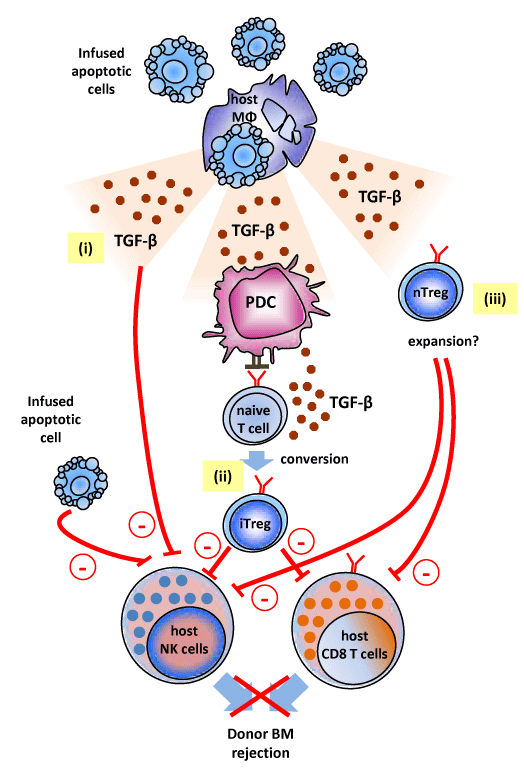
 |
| Figure 1: Immune mechanisms involved in the graft-facilitating effect of intravenous apoptotic cell infusion. Graft rejection is mediated mainly by host NK and CD8+ T cells that resist to conditioning regimen [32]. Intravenous apoptotic cell infusion may neutralize these effectors of graft rejection by several mechanisms, including: (i) secretion of TGF-β after elimination of infused apoptotic cells by host splenic macrophages [36] and (ii) generation of induced Treg (iTreg) by conversion from naive CD4+ T cells after interaction with graft-derived donor PDC in a TGF-β-dependent manner [38]. (iii) TGF-β secretion may also participate to the expansion of natural Treg (nTreg). We hypothesize that TGF-β neutralizes NK cell-mediated rejection [41,42], while Treg (i.e., iTreg and nTreg) inhibits both NK and CD8+ T cell cytotoxicity [43,44,94]. Moreover, apoptotic cells may interact directly with NK cells and alter their cytotoxicity [95]. Abbreviations used: BM, bone marrow; iTreg, induced regulatory CD4+ T cells; MΦ, macrophage; nTreg, natural regulatory CD4+ T cells; PDC, plasmacytoid dendritic cell. |